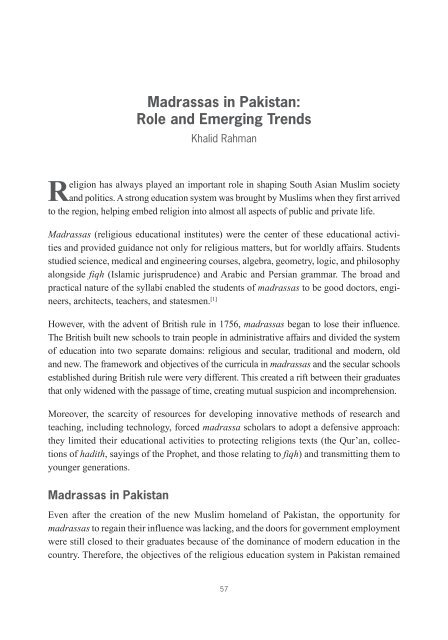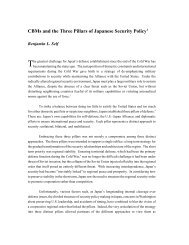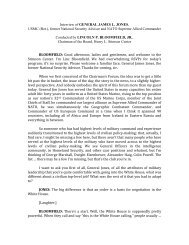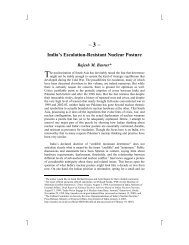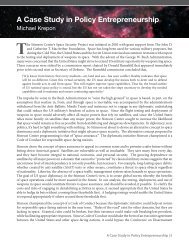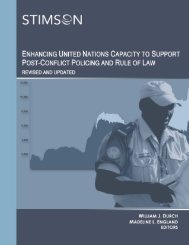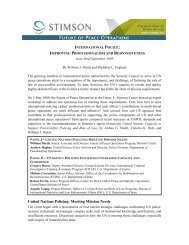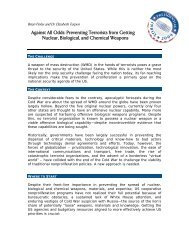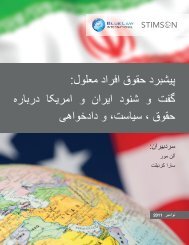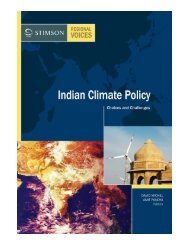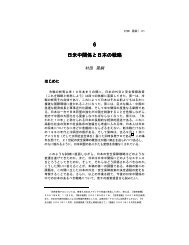Islam and Politics - The Stimson Center
Islam and Politics - The Stimson Center
Islam and Politics - The Stimson Center
You also want an ePaper? Increase the reach of your titles
YUMPU automatically turns print PDFs into web optimized ePapers that Google loves.
Madrassas in Pakistan:<br />
Role <strong>and</strong> Emerging Trends<br />
Khalid Rahman<br />
Religion has always played an important role in shaping South Asian Muslim society<br />
<strong>and</strong> politics. A strong education system was brought by Muslims when they first arrived<br />
to the region, helping embed religion into almost all aspects of public <strong>and</strong> private life.<br />
Madrassas (religious educational institutes) were the center of these educational activities<br />
<strong>and</strong> provided guidance not only for religious matters, but for worldly affairs. Students<br />
studied science, medical <strong>and</strong> engineering courses, algebra, geometry, logic, <strong>and</strong> philosophy<br />
alongside fiqh (<strong>Islam</strong>ic jurisprudence) <strong>and</strong> Arabic <strong>and</strong> Persian grammar. <strong>The</strong> broad <strong>and</strong><br />
practical nature of the syllabi enabled the students of madrassas to be good doctors, engineers,<br />
architects, teachers, <strong>and</strong> statesmen. [1]<br />
However, with the advent of British rule in 1756, madrassas began to lose their influence.<br />
<strong>The</strong> British built new schools to train people in administrative affairs <strong>and</strong> divided the system<br />
of education into two separate domains: religious <strong>and</strong> secular, traditional <strong>and</strong> modern, old<br />
<strong>and</strong> new. <strong>The</strong> framework <strong>and</strong> objectives of the curricula in madrassas <strong>and</strong> the secular schools<br />
established during British rule were very different. This created a rift between their graduates<br />
that only widened with the passage of time, creating mutual suspicion <strong>and</strong> incomprehension.<br />
Moreover, the scarcity of resources for developing innovative methods of research <strong>and</strong><br />
teaching, including technology, forced madrassa scholars to adopt a defensive approach:<br />
they limited their educational activities to protecting religions texts (the Qur’an, collections<br />
of hadith, sayings of the Prophet, <strong>and</strong> those relating to fiqh) <strong>and</strong> transmitting them to<br />
younger generations.<br />
Madrassas in Pakistan<br />
Even after the creation of the new Muslim homel<strong>and</strong> of Pakistan, the opportunity for<br />
madrassas to regain their influence was lacking, <strong>and</strong> the doors for government employment<br />
were still closed to their graduates because of the dominance of modern education in the<br />
country. <strong>The</strong>refore, the objectives of the religious education system in Pakistan remained<br />
57


